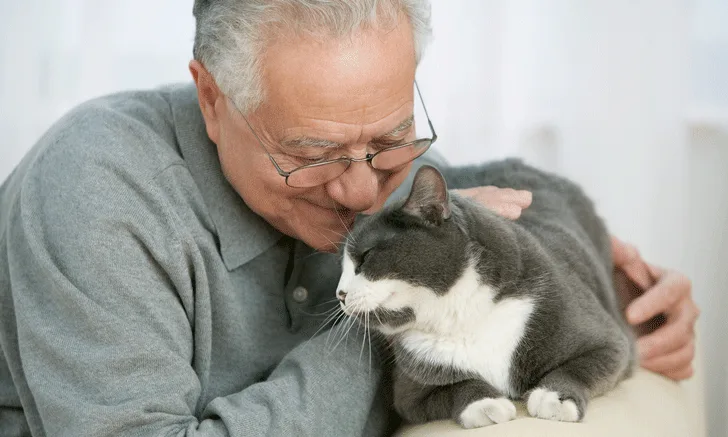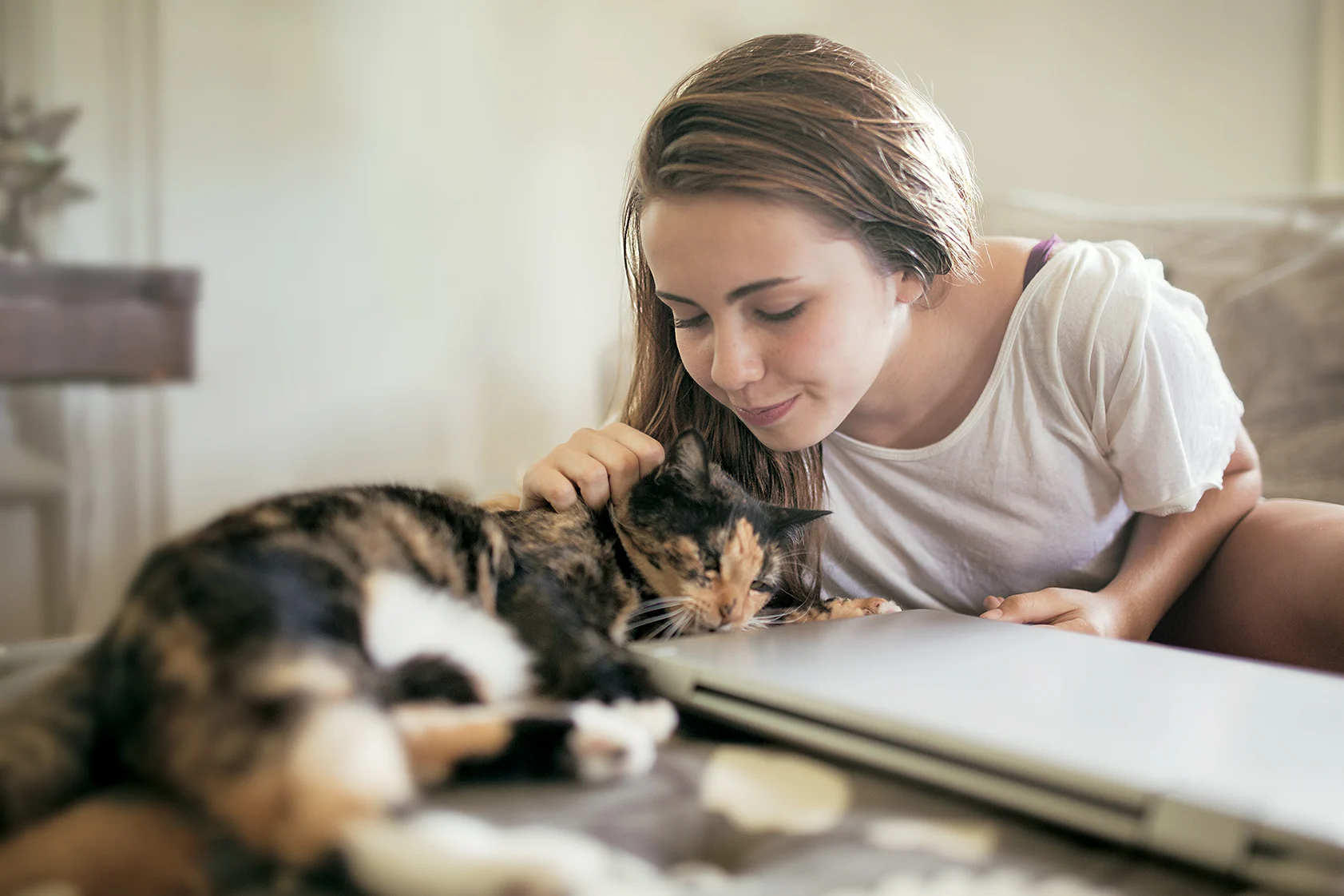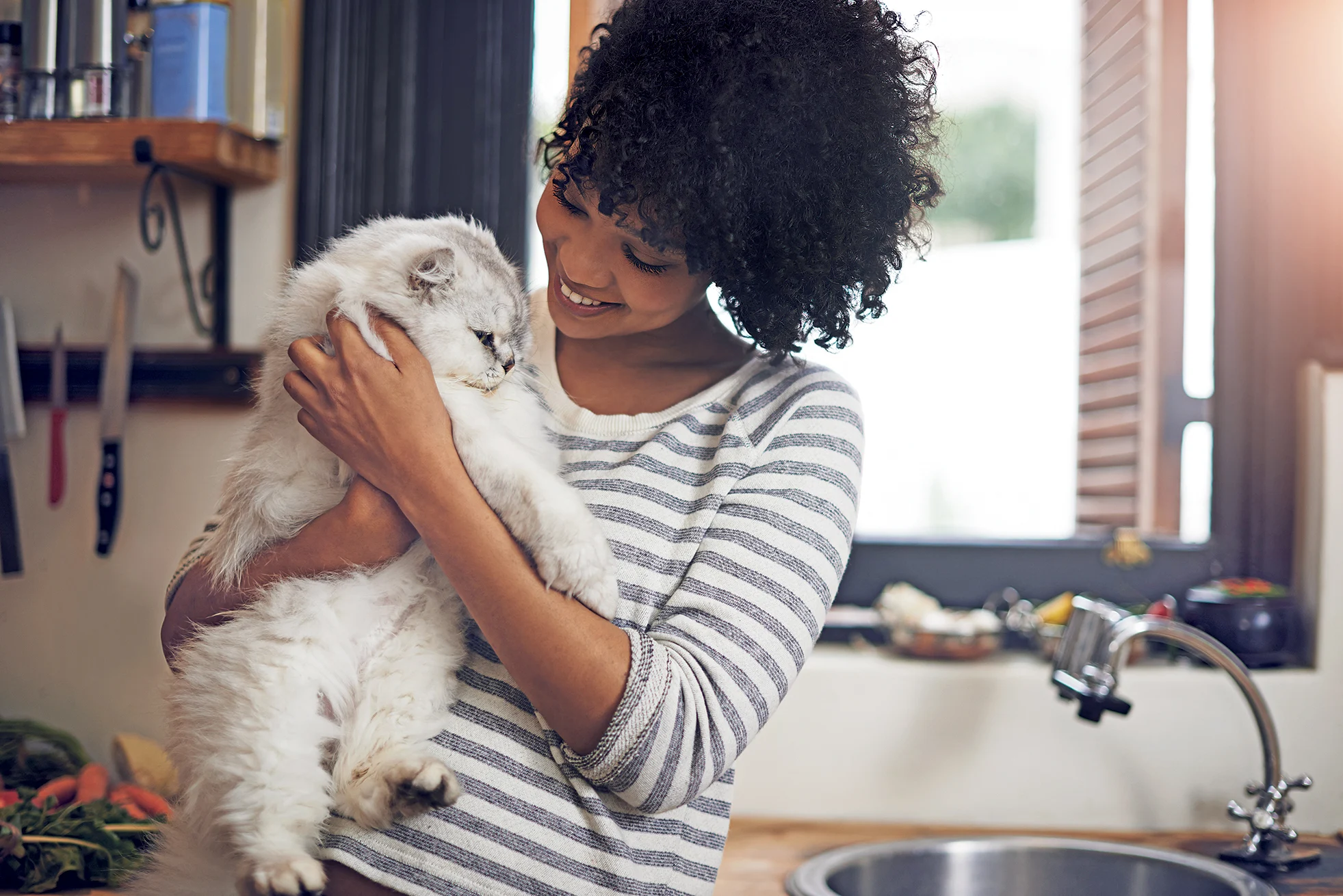Clinician's Forum: Expert Views from a Roundtable on Feline Treatment

Brought to you by Zoetis
Participants
Ashley Bourgeois, DVM, DACVD, Owner, Dermatologist, Animal Dermatology Clinic, Portland, Oregon
Douglas DeBoer, DVM, DACVD, Professor of Dermatology, University of Wisconsin–Madison
Alison Diesel, DVM, DACVD, Clinical Associate Professor, Texas A&M University
Cathy Lund, DVM, Feline Practitioner, Behavior Consultant, Owner, City Kitty, Providence, Rhode Island
Ilona Rodan, DVM, DABVP, Field Practitioner, Behavior Consultant, Cat Behavior Solutions, Feline Friendly Consulting
Moderator
Patricia Stark, DVM
Reducing Feline Stress While Treating Chronic Disease
Cats often need to receive oral medication and have multiple practice visits, both of which can be stressful for the cats and their owners. The following discussion focuses on ways to reduce stress during veterinary visits and medication administration to cats.
Dr. Stark: How can veterinarians embrace the uniqueness of cats and their owners to make practice visits less stressful?
Dr. Rodan: As solitary hunters and survivors, cats have strong protective mechanisms, such as scent-marking their territory. That works very well for cats, but we as humans don’t understand it. Things that we can understand are that they withdraw or hide and will become aggressive if we don’t recognize the earlier signs.
Cat owners are also unique. They are more likely to be college-educated, more open-minded, and more agreeable—all of which make them outstanding clients. They want us to educate them. They want to know why they should bring their cat in if their cat seems healthy. What subtle signs should they look for at home between appointments? How are they going to prevent stress for their cat and for themselves before, during, and following the appointment? We have a great opportunity to make the visit a good experience for them and for us. When we do that, we are improving the cat’s health and welfare, we are improving our client loyalty, and we are protecting ourselves. We increase our safety working with cats.
There are 5 steps to addressing the challenge to the cat owner and the cat surrounding the veterinary appointment. The first step is to encourage owners to implement carrier training to make cats more comfortable during the visit and when receiving medication. For clinicians, the appointment may seem like 20 to 30 minutes, but for the patient and client, it can seem like hours. Putting these cats on long-term medication can cause long-term stress and may impact the human–animal bond. Carrier training works well for these owners and for the cats. Cats are smart, and carrier training is easy. All this information is available from the American Association of Feline Practitioners (AAFP) at catvets.com; clinicians can share it on your practice website and share the link with owners when they schedule their appointments or educate them in the exam room.
Step 2 is changing mindset, which is probably the most challenging thing to do. We may think of a cat as being “bad” or “evil.” However, as practitioners, we know that cats are only fearful, painful, or otherwise stressed—they are never bad. Having this mindset, and adjusting our vocabulary, will make a huge difference, not only for clinicians, but for the entire veterinary team. Knowing a cat is fearful can prompt us to find proper solutions to address it. Knowing it is painful, we can give it analgesics and reassess.
We have a great opportunity to make the visit a good experience for them and for us. —Dr. Rodan
Step 3 is adjusting the environment. Making the practice cat-friendly is critical. The Cat Friendly Practice program developed by the AAFP is a really important program. It is free, and it’s good for companion animal, mixed-animal, and feline practices. It is a mentored program, which helps ensure all team members are educated.
Step 4 is providing hiding options instead of tight restraint. We now know that tight restraint increases the chance of a cat’s aggression. Studies show that cats that are tightly restrained, scruffed, or restrained with clipnosis are more difficult to work with than cats that are gently restrained.1,2 This also doubles the appointment time. Loosely restraining cats and allowing them to hide will help increase efficiency and get those cats back home faster. Also, if you train a cat to a carrier, that cat can hide in the carrier while you are doing most of the exam and even some of the procedures, especially if the bottom half of a hard-sided carrier or a soft-sided carrier has a large opening. Coming from the side or behind allows a cat to still feel hidden.
The last step is sedating before it’s too late. I like to start with preventing problems. Cats known to be fearful or that have chronic anxiety and those that have had a previous negative veterinary experience should be prescribed an anxiolytic medication (eg, gabapentin) to be given at home prior to veterinary visits. The capsules can be opened and the contents mixed into a small amount of canned food to reduce anxiety. Also, if a cat is struggling, instead of getting more people to handle that cat, sedate it. Let the owners know it will make it easier for their cat and facilitate future visits. The AAFP’s Feline Anesthesia Guidelines (see Additional Resources) are a great resource.
Dr. Bourgeois: What often gets overlooked is that fear-free practice really starts at home. We need to educate our clients better, such as teaching them how a carrier can be a safe place and not a fearful place, because we can do a lot of our dermatologic exams with the patient in the carrier, and that’s been a game changer for a lot of our feline patients.

Dr. Stark: Why aren’t more veterinarians taking steps to destress visits, and what can be done to encourage them to make their practice more cat-friendly?
Dr. Lund: Habit is a big driver. Many veterinarians still believe that tight restraint is safer. I think that they believe that it is better for their team when these cats are held tightly, and they don’t necessarily see that the opposite occurs. Education can be helpful there; the AAFP has lots of information on this topic that can really help an office through how to manage visits (see Additional Resources). There’s really very little that I do that is more impactful than the way I restrain a cat during an examination. Gentle and respectful restraint sends a very powerful message to our clients that we do respect their cat and we pay attention to their comfort and their emotional well-being. That builds trust, and trust is key in veterinary medicine. It helps facilitate the exam and encourages owners to return with their cat.
Dr. Diesel: I think a lot of veterinarians still have difficulty reading feline behavior. We know what an aggressive dog looks like, and we know how to handle aggressive dogs. But cats are trickier, and I think many veterinarians struggle when trying to read the behavior of a cat. It’s not something that has been readily taught in the veterinary curriculum. We’re starting to see changes, but there’s a long history of it being appropriate to scruff cats. We now know that this can heighten the stressful experience for the animal and make examinations more difficult. So I think it’s overcoming a lot of these hurdles and previously thought knowledge to find better ways to handle our feline patients and make the visit a lot easier for ourselves and our clients.
Dr. DeBoer: It really comes down to education. How many of us during veterinary school had somebody train us or tell us how to handle cats in a fear-free manner? I would guess almost no one. So it’s a matter of educating ourselves. It’s a matter of us doing a better job in the veterinary schools. It’s a matter of educating our veterinary nurses, client services representatives, and practice owners about appropriate things to do.
Gentle and respectful restraint sends a very powerful message to our clients that we do respect their cat and we pay attention to their comfort and their emotional well-being. —Dr. Lund
Dr. Stark: What do veterinarians need to see, hear, or know to be inspired to take these simple actions?
Dr. Diesel: Showing that it’s a lot easier to perform an examination on a cat that is more gently handled. Using things like towels and what I call the “kitty burrito technique,” where you swaddle them up a little more readily, allowing them to have areas to hide. We are able to get to the parts of the body that we need to examine a lot more effectively without them feeling threatened or stressed during the process. In addition, using E-collars as a way to protect ourselves from being bitten, along with the towel can again provide a safe option for the veterinary team while making the cat feel less confined and less stressed by being forcefully held down and scruffed or stretched during the examination process. Demonstrating these techniques to both veterinarians and veterinary nurses would show that the fear-free handling techniques can be really excellent and provide a lot better experience for everybody involved.
Dr. Stark: Is there a source for general practitioners to reference for implementing these techniques on their own?
Dr. Rodan: The AAFP’s’ Cat Friendly Practice program has excellent information on making the environment and the handling more friendly. Also, the AAFP’s Feline-Friendly Handling webinar was updated in 2018 and is a great resource.
Dr. Bourgeois: Our clinic became Fear Free certified within the past year. Although there is a cost to become certified, it’s well worth it, and the program has a lot of free resources available on its website (see Additional Resources). Another often overlooked resource is Fear Free Happy Homes (see Additional Resources), which provides printable client and staff handouts to educate on how to properly handle cats. It’s important to have these resources available to clients to reduce their fear of veterinary visits.
Dr. Stark: Zoetis recently performed some market research to gauge cat owners’ experience with giving oral medication. Many owners reported challenges, which often lead to missed doses and owner and patient frustration. Does this response match the feedback you’ve heard from owners?
Dr. DeBoer: Owner distress when trying to medicate a cat is probably a universal experience. It leads to a discussion about what happens when there are missed doses. How many times have you heard, “I pilled my cat and then I found the pill the next day under the sofa because he had thrown it up.”
Dr. Rodan: I think the problem is that we end up with compliance problems that lead to treatment failures, and then owners think the medication doesn’t work and they don’t want to come back because the veterinarian didn’t do a good job, and it goes on and on from there.
What often gets overlooked is that fear-free practice really starts at home. We need to educate our clients better. —Dr. Bourgeois
Dr. Lund: I think part of the preference by owners for over-the-counter treatments is because they really don’t want to come to the practice because it’s not a positive experience. We need to flip that around and somehow make going to the practice less of a chore and more of a positive experience for both the owner and the cat. Even though we may not have a lot of materials right now that we can use, there is an enormous opportunity here to do good.
Dr. DeBoer: That brings up another very important point, which is owners losing confidence in their veterinarian. If every time they visit a practice they are given another pill that they have to jam down their cat’s throat that doesn’t work because they are not able to give it often enough, they are not going to return. They are going to go to somebody else—hopefully not somebody who is going to give the cat a long-acting steroid injection. That sometimes is the case, and that’s not a good situation for the cat. So, this loss of confidence in the veterinarian and the whole diagnostic process is also an issue.
LiFELINE: A New Resource
Treating cats is an important opportunity to provide excellent veterinary care and to build the small animal practice.
After using some simple solutions to make their practice more welcoming to cats, 79% of practices reported increased revenue, increased satisfaction, new feline patients, and more patient visits.*
In addition to creating products to facilitate convenient and complete care for cats such as Revolution PLUS, Simbadol, Convenia, and more, Zoetis has also created its Lifeline initiative, which provides focused, easy-to use resources for veterinary professionals and cat owners.
Clinicians can use these resources to educate themselves and their team and clients on topicssuch as:
4 reasons feline veterinary care is vital
4 behaviors cat owners should monitor regularly
5 ways to decrease stress during veterinary visits
More information can be found at dvmlifeline.com and catlifeline.com.
*American Association of Feline Practitioners. 2018 Survey Results. AAFP website. https://catvets.com/public/PDFs/CatFriendlyPractice/2018-CFP-Survey-Results.pdf. Accessed November 2019.

Dr. Stark: What tips do you have for making oral medication administration less stressful for cat owners and patients?
Dr. Bourgeois: I always give owners tricks for giving oral medication. I also ask them to call me if they can’t give it, because I hate when they come back for a recheck (if they even come back, because they might be so frustrated they don’t want to come see me again) and say they haven’t been giving the medication for the last 2 weeks because the cat hated it. I would rather them call me with an update so I can give them more tips. I’ve had owners shocked when I showed them how to give an appropriate medication if the cat won’t take it in a treat or wet food, because they were doing it wrong or approaching it in a bad way, in regards to coming from different angles.
It really comes down to education. ... It’s a matter of us doing a better job in the veterinary schools and educating our veterinary nurses, client services representatives, and practice owners about appropriate things to do. —Dr. DeBoer
Dr. Rodan: Cats are creatures of habit; they like routine and they like familiarity. It helps to start giving them soft treats at home, even when they are kittens, so that by the time they need medication, you can put it in the treat. If the owners didn’t try treats early on, they can try giving different treats to see if any work. Cats are smart; if you start them on something or if you train them to come and sit and get a treat and then sneak in the medication with that, that will make a big difference.
Another issue is cats that have multiple medical conditions and need different medications. Clinicians can try prescribing medications that only need to be given once daily or less frequently and sending home small gel capsules containing all medications to administer at one time. For cats that will not take any type of treat, owners should be taught to approach the cat calmly from the side or behind to administer medication. This should be followed with a reward (eg, positive attention).
Veterinary nurses are critical to client education about medication administration. If owners continue to have difficulty medicating their cat, they could consider hiring a cat sitter or veterinary nurse to administer medication at home; many owners appreciate this service, regardless of expense. Other alternatives are to have a veterinary nurse or cat sitter go to the house daily and give the medication so that the owner’s bond with the cat is not compromised.
Additional Resources
American Association of Feline Practitioners
Feline-friendly handling guidelines, client brochure, & video
Online CE webinars (Feline-Friendly Handling, 5 Cat-Friendly Concepts to Integrate in Your Practice)
Fear Free
